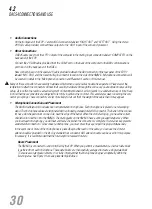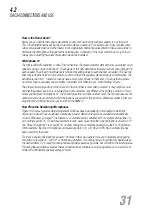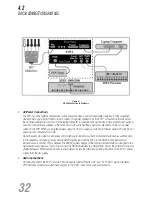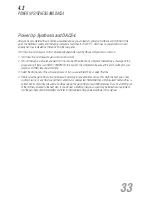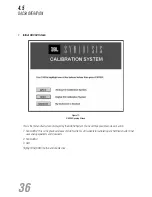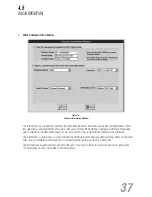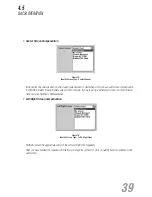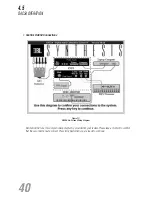
25
4.1
OPERATIONAL OVERVIEW
Display Data:
DACS4 uses the laptop computer to display the results of each test. This data is plotted on an X-Y graph in a familiar
format, Amplitude vs. Frequency. In addition to the response data, there is also a “target” response curve present on
the same graph. The target curve is specific to the Synthesis model, mode of operation and channel being tested. This
allows you to quickly see how far from the ideal you actually are. As additional tests are performed, they can be added to
the display at will, allowing comparison between channels.
Make Corrections:
When you initialize DACS4, you input information about the Synthesis model being calibrated. With this, DACS4 loads
configuration information into the SDEC, which customizes it for use with the particular model, whether Cinema only
or Music, and even compensates when the speakers are placed behind a perforated screen. At the same time,
appropriate target curves are loaded into memory.
DACS4 allows manual adjustment of as many as fifteen bands of parametric equalization. However, it is much easier to let
the computer do it for you. To this end, DACS4 incorporates a very sophisticated automatic EQ algorithm.
In addition, DACS4 performs auto-time correction. This routine determines the time arrival variance from channel to
channel and programs the SDEC to add delay as needed to normalize all channels to the same arrival time.
At the conclusion of the calibration session, all settings are transmitted to the FLASH EPROM in the SDEC and made
permanent (burned).
•
Target Curves:
Intuitive logic would tend to indicate that the best sound would be achieved when the system delivers flat frequency
response. While this is true for all other components in the audio chain, this is definitely not true in the case of loud-
speakers installed in listening rooms. There are several reasons for this, and it has taken many years of research to
establish just what the most desirable performance characteristics are.
• Ideal Low-Frequency Response
Room boundaries (walls, ceiling and floor) tend to contain low-frequency energy within the room. Simply stated,
this results in a boost in low-frequency energy. This is true whether it is a speaker or a piano producing the
sound. The exact frequency at which this effect begins and the amount of boost realized are a function of the room
size, shape and wall construction. No two spaces are ever exactly alike. This same low-frequency enhancement
also occurs in recording studios, and the recording engineers know this will occur during playback. They balance
their recordings in anticipation of this. Therefore, it would be wrong to “flatten” the speaker system response in
the playback environment. To do so only results in a thin bass sound.
By surveying many listening rooms over the years, JBL engineers have established a low-frequency response
characteristic that delivers the most consistently satisfactory results. This has been confirmed through extensive
subjective evaluation tests.




















